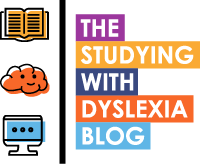Top Tips For Supporting Dyslexic Students Part 1

Recently I had the pleasure of spending some time with the SEN team at St David's College in Llandudno. St David's is a mainstream school that is BIG on inclusion and as such has a team of specialists that support the young people who are studying there.
In a recent mailing I asked the Parenting Dyslexia Community to send me some questions that I could

Vanessa Evans - SENCO, St David's College.
put to the team at St David's that would be useful to our readers to read about. SENCO, Vanessa Evans very kindly got her team to look through the questions and make recommendations.
What I hadn't bargained on was how much information that St David's would send back to me so I will be sharing this information with you over a series of posts.
Which strategy can teachers use in the classroom that would support the most dyslexic students and students with dyslexic tendencies?
Thanks to Helen Lyall for these questions...
Which strategy can teachers use in the classroom that would support the most dyslexic students and students with dyslexic tendencies?
When planning lessons and preparing course materials subject teachers should anticipate that pupils will have the following difficulties:
Short term working memory problems, problems with visual and auditory processing, weak organizational skills.
Lessons should be delivered in a multisensory format when possible and pupils should be given extra thinking time.
Dyslexic pupils often take longer to complete classwork
Teachers must check that tasks have been written down correctly and the pupils understand what is being asked of them.
Text material available in a format that can be read aloud.
Answers can be accepted in key word or note form so that pupils can get their ideas down.
The number of instructions given at any one time should be limited and repeated throughout the lesson/activity.
Allow pupils to work with buddies to clarify instructions and learn from their peers
Use all their senses to make the experience interactive and experiential.
With these challenges in mind the following tips will help.
Don’t ask them to copy text, especially from a board.
Praise any attempt to write, but scribe whenever possible after their initial plan.
Do not put them under pressure to read out in class; read any worksheets (that are above their reading ability) for them.
Differentiation is essential and work given/expected should be at their level.
Mark for content rather than spelling/punctuation.
Use of assistive tech should be encouraged from an early age for longer pieces of work – speech to text and text to speech.
Don’t use ‘rapid response’ questioning methods/games which would put the Dyslexic pupil under pressure.
Make learning fun and give short, achievable tasks which promote success.
How can classroom staff support dyslexic students pastorally?
Development of self-esteem and confidence is key. Help pupil to understand that Dyslexia is separate from intelligence and that everyone has skills that are weaker and those that are stronger. Practise ways that they can ask for help in class without feeling that they are singled out.
Organization – pupils need support with preparation for the school day – usually with regard to equipment needed in lessons e.g. pencil case, books and sports kit. Encourage the pupil to use their smart phones to help them to remember what they need.
When doing homework in the evenings pupils will need one to one support to get on task until they are truly independent learners.
Make sure that they know exactly what the issues are with each child that they teach. If in doubt, communicate with the 1:1 teachers.
Some really useful tips from the staff at St David's College. There are more to come so watch out for the second part in this series which will be available next week.

